Wednesday 30th October 2013Protecting Your Artwork Online

As an artist who sells work online, you've got images of all aspects of your work all throughout your Gallero gallery - it's the only way to sell online, after all. But how do you prevent people from taking your images and using them without permission, or simply prnting out a copy of them and framing that instead of buying the original from you? It can be an extremely frustrating problem, and one that doesn't always have an easy solution, since to a certain extent you probably do want people to share your images to help you grow in popularity. There are a few things you can do that will minimise the problem while still giving you that viral popularity boost, so let's take a look at the more popular options.
First of all, the best practice for online images of your work is carefully control the size of your output. Images on the web are displayed at 72 pixels per inch, more than enough to accurately show off your work on-screen - but if you try to print out these images, they wind up looking like pixelated junk, as printers typicall operate at 300 pixels per inch. If you constrain your image sizes to under 1000pixels, you'll get a great on-screen representation, but anyone who tries to steal your work and print it out will wind up with a 3-inch image that they can barely see properly.
Another popular tactic, generally combined with the size control technique listed above is to watermark your images. A watermark is a marking of some kind placed over the image in such a way that it doesn't interfere overmuch with the appreciation of the image itself, but makes it every clear that the image has an author and that the watermarked copy of the image has been used outside of its originally intended purpose. Most watermarks consist of the artist's name and/or logomark superimposed over the centre of the image in a very light opacity, not to be confused with an image-based byline in the bottom left or right corners which can be easily cropped away. If you choose to use a watermark, make sure that you note in your Gallereo descriptions that purchased artworks do not contain the watermark.
Finally, one of the most foolproof ways to ensure nobody is using your artwork online without your permission is to employ an intellectual property protection service. These companies have sophisticated software to crawl the web for examples of infringement, and scary legal teams dedicated to rooting out theft. Of course, this isn't always an option for those of us who are still in the 'starving artist' phase of our careers, but it is extremely effective. If you can't afford to use such a service, there is an alternative, although it requires some work by hand. Google has recently debuted a new type of image search that actually lets you search using images as your search terms. You upload a copy of your artwork image, and it searches the web for other instances of that image. Simply visit
www.google.com/imghp to test it out for yourself!
Posted on October 30th 2013 on 06:17pm
0 Comments
Saturday 26th October 2013What to Avoid on Your Gallereo Blog
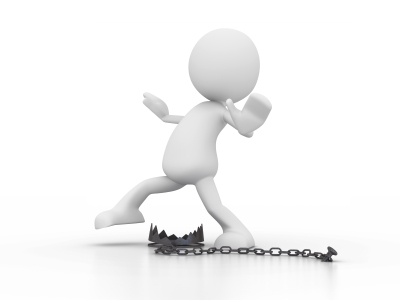
Confused? That's OK! Most of these types of articles tend to offer you tips on what to do - but we thought we'd switch things up today and give you some advice on what to avoid on your blog. We don't really want to tell you want to do, as your blog is your own - but if you avoid these pitfalls, your general creativity will fill in the rest!
Arguably the most important thing to avoid on your blog is pointless posting. Pointless posts typically occur when you haven't decided what you're hoping to get out of running your blog. Fortunately, this is pretty easy to fix with a few moments thought. Increasing sales of your artwork is probably the most important goal for your blog, but there are others as well, ranging from increasing your exposure to demonstrating intelligent views to reaching out to your fans. If you keep those goals firmly in mind, you'll cut down on pointless posts that don't really move you closer to them, and instantly start generating ideas that will help you achieve them.
The next thing to avoid is posting, like, you know, whenever. The most successful blogs have a schedule, and they stick to it - you can do the same with your Gallereo blog. Just make sure that you set realistic expectations. If you hate writing, it's not likely that you're going to be making five posts a week forever, and even if you love writing, life tends to get in the way. Whatever you decide your posting schedule should be, stick to it.
Be sure to avoid compartmentalising. If you've been following our advice series, you know by now that it's vital to have social media accounts in addition to your Gallereo blog. To use them to best effect, you want to make sure that all your social media accounts and your blog play nice with one another. The more you mention Facebook on your blog and your blog on your Twitter and your Twitter on your Facebook, the better integrated they'll be, and the better your fan community will function. If your Facebook fans don't know what your blog fans know, or vice versa, you'll start running into problems.
Finally, the most important thing to avoid is too much self-promotion. This might seem like a paradox, but if you want to keep your fans engaged with your blog and coming back regularly, you'll need to post content about more than just yourself. Not that you should feel bad about posting about you and your work, upcoming shows or events, etc, but rather that you should space it out with interesting content about the art world in general. Things you love, things you hate, things that inspire you and things that speak to you are all good post ideas that will help space out the posts about you while both keeping your readers engaged and avoiding the pointless posting problem. Happy blogging!
Posted on October 26th 2013 on 07:51pm
0 Comments
Wednesday 23rd October 2013A Guide to Pricing Your Art Properly
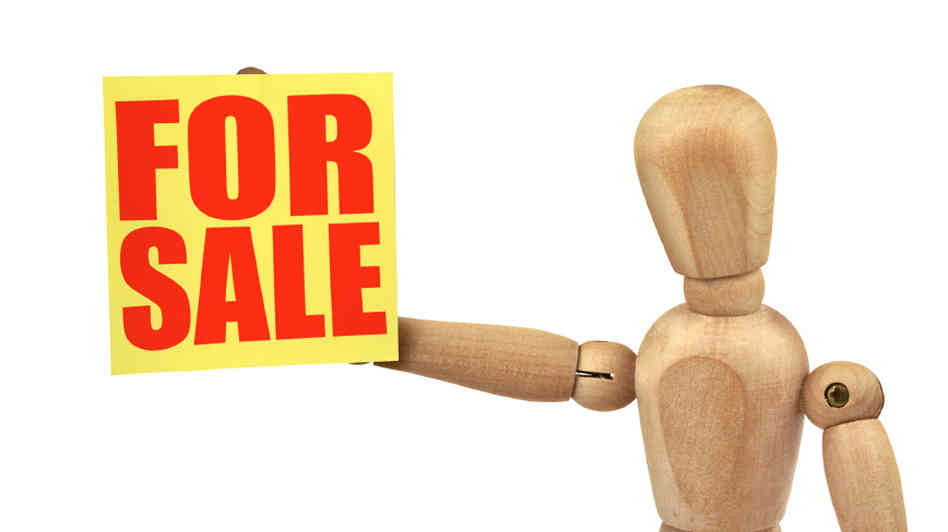
As an aspiring artist hoping to start making some sales, one of the most important considerations is also one of the most difficult: how to price your art properly. Properly means a few things, of course, but primarily it's about striking a balance that fairly compensates you for your work while still appealing to both art collectors and public buyers. Don't be seduced by the idea of starting out selling works for five figures, as this can set you up for disappointment, but with skill and perseverance you will be able to work your way up there! We've prepared a few tips to help you decide how to price your work to meet the right balance for your background and skill set.
The first consideration when it comes to pricing is whether you're selling original works or prints. If you're working in a digital medium, this choice is essentially made for you, unless you want to sell only a single copy of a digital work - although this is a fairly uncommon practice. If you work in a physical medium, it's possible to sell both prints and the original itself, which can dramatically increase your income from a single piece. Prints are naturally priced much lower than originals, but this can fluctuate based on a number of factors. The cost of the original itself can increase the cost of prints, as can offering a 'limited run' of 250 or 500 prints.
For new artists, a good general pricing rule is to take into account the cost of your materials and combine it with a reasonable hourly wage for the amount of time you spent working on the piece itself. For example, if your materials cost $75, and you spent 25 hours on a piece at $20 per hour, the final price for the piece would be $575. It can be difficult to determine a fair hourly wage, but if you're hoping to use your art as a means to support yourself, ensure that you strike a fair balance between saleability and the ability to keep a roof over your head.
Another useful tip is to take a look at what other artists who have comparable amounts of skill and experience are charging for their work. While it can be very difficult to objectively assess comparable skill, taking a look around the web and through various local galleries can help give you a sense of the general price point for works that are similar in terms of size and style.
Keeping all these tips in mind, one of the most useful things you can do to increase your prices successfully is to gradually increase your selling price until your sales slow down, then lower your prices. If you want to get the most out of your work, you must constantly pay attention to your sales and keep a finger on the pulse of the art world in general.
Posted on October 23rd 2013 on 10:01pm
0 Comments
Friday 18th October 2013Connecting Online with Local Art Buyers
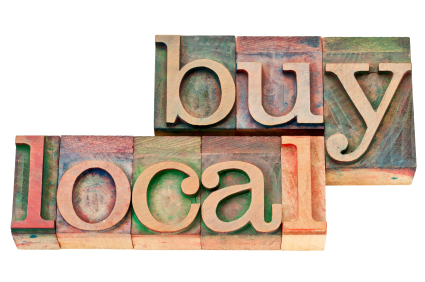
As an artist hoping to sell your work online, you probably haven't given much of a thought to your local sales prospects. Showing your work in local galleries can be an incredibly difficult process, and even after a great deal of work it doesn't guarantee any of your pieces will actually sell. But it's undeniable that developing a local fanbase can dramatically improve your chances of successfully climbing your way up in the art world. Fortunately, it's possible to combine your online strategy with an offline one to maximise your sales potential.
We've been talking a lot about the value of SEO for artists lately, and with good reason - it's one of the most important tools to utilise when you're trying to sell your artwork online. But there's a side to search engines that industry players like Google are just beginning to get a handle on, which is known local search. This means that there are a great deal of opportunities for artists who are savvy enough to capitalise on it - and it's fairly easy to do.
As you may or may not have guessed, it would be very difficult to become highly ranked in search engines for generic terms such as 'nature photographer' or 'landscape painter' - but when you begin to couple those terms with local city/town/region names, the prospects begin to get more favourable. Instead of being discouraged by a slow response to your SEO efforts, you can choose to gradually build up your prestige by beginning at a more local level, and you can target these terms fairly easily with a bit of quick modification to your Gallereo page and the titles and descriptions of your artwork.
Consider including the location of your pieces in your titles, even if only as part of the short title description we suggested in our main 'SEO for Artists' post - but be sure to include them in the longer descriptions no matter what. This can quickly help you begin ranking for localised search keywords, and as people begin to think of you as a London-based artist (or wherever you happen to be from), they'll begin mentioning that when they link to your Gallereo page, and that will boost your local rankings even more. Many art buyers are keen to support their local artists and art communities, so some careful thought into how you choose to name and identify your artwork can make a huge difference in your success! Good luck!
Posted on October 18th 2013 on 04:43pm
0 Comments
Wednesday 16th October 2013Don't Miss This One-of-a-kind London Exhibit
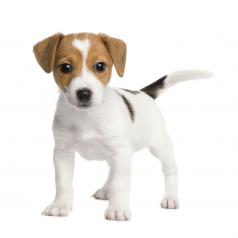
One of the most intriguing art shows to hit London this year opened recently at south London's Gallery on the Corner, with a very special goal in mind - and showcasing some very special artists. Each of the more than 30 artists being showcased are all of the canine variety, and each has created a special series of minimalist masterpieces for sale, with the proceeds going to the aid of the Battersea Dogs and Cats Home, a nearby rescue shelter.
The art world has always been fascinated by animals who paint, from the great apes such as gorillas and chimpanzees to elephants and even cats - but the organizers of this show, Tom Webber and Tom Lakeman, have put together the very first British exhibition of canine artworks. Each piece is available for sale, with a framed original work costing £100, with the full proceeds going to aid the rescue shelter. First opening night was October 11, and over 140 art buffs (and in many cases, their canine counterparts) stopped by to appreciate the works and help out the shelter.
In order to create their masterworks, the dogs were each given a well-stocked food bowl, complete with oil pastel surreptitiously attached to the side. The entire setup is placed on a piece of blank paper, and as the hungry pups chow down on their meals, the bowl is pushed across the paper in various stylish sweeps of line. The final pieces are decidedly minimalist, but also - perhaps a touch unexpectedly - quite appealing in their enthusiasm. Naturally, the more excited the dog is about its meal, the more expressive and dynamic the final piece will be.
The show only runs until October 20th, so be sure to swing by if you're in the neighbourhood and see these truly unique creations. The gallery is also dog-friendly, so be sure to bring along all your canine friends - and for an extra special treat, they can create their own masterpieces right there in the gallery! If you happen to find a framed piece you really enjoy, remember that all the funds raised go straight to the aid of the rescued animals at the Battersea Dogs and Cats Home.
Posted on October 16th 2013 on 12:04pm
0 Comments
Saturday 12th October 2013SEO Basics for Artists
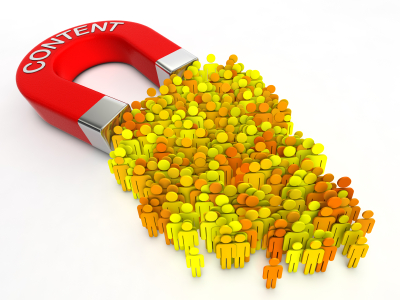
Most of you have probably heard the acronym 'SEO' by now - but for those of you who haven't, it stands for 'search engine optimisation' and it's one of the most important aspects of online art sales. Search engines are responsible for a massive percentage of traffic for almost every website, and your Gallereo page is no exception. Unfortunately, many artists are not exactly sure how to take advantage of SEO techniques when it comes to their art sales, so we'll take you through some basic tips you can apply to boost your web presence. Even though the field of SEO is huge and constantly changing, these tips are fairly universal and not likely to change any time in the future.
The most important thing you need to realize is that text is the key to all good SEO. While it might seem obvious, it's crucial to remember that because all web searches are conducted via text, the more text you have associated with your images and your Gallereo page, the more often you'll appear in search results. Manipulating where your rankings appear is also important, but a bit outside the scope of this article - and we're focused on the basics here. This focus on the importance of text presents a few different opportunities.
First of all, be very careful how you title your work. If you name your artwork 'Untitled' and leave it at that, it's highly unlikely that anyone is going to find it. While I wouldn't presume to ask you to change the real title (or lack of title), for the purposes of your Gallereo page it's very helpful to add a brief bit of descriptive text after the actual title. Consider mentioning the subject matter, the medium you used, and perhaps even the general colour palette you worked with.
Next, ensure that you've filled out the description section fully. There's no need to include an entire essay on the piece, but be sure to discuss the elements you mentioned in your brief title description in longer detail. Include as much information as you can to help potential art buyers find your work, and include mentions of some popular search terms as well, such as 'contemporary art for sale' and so on - just be sure to integrate them naturally into sentences, as Google will penalise sites that it thinks are simply 'keyword stuffing' (ie: filling the entire page with search keywords and no real content).
Finally, and we mentioned this in our previous post, make good use of your Gallereo blog. It's a part of your subscription, and an incredibly valuable tool if you take the time to use it well. When you integrate it with your Facebook fan page, as every time someone shares it or 'Likes' it on Facebook, Google (and other search engines) will regard it even more highly.
Most of you have probably heard the acronym 'SEO' by now - but for those of you who haven't, it stands for 'search engine optimisation' and it's one of the most important aspects of online art sales. Search engines are responsible for a massive percentage of traffic for almost every website, and your Gallereo page is no exception. Unfortunately, many artists are not exactly sure how to take advantage of SEO techniques when it comes to their art sales, so we'll take you through some basic tips you can apply to boost your web presence. Even though the field of SEO is huge and constantly changing, these tips are fairly universal and not likely to change any time in the future.
The most important thing you need to realize is that text is the key to all good SEO. While it might seem obvious, it's crucial to remember that because all web searches are conducted via text, the more text you have associated with your images and your Gallereo page, the more often you'll appear in search results. Manipulating where your rankings appear is also important, but a bit outside the scope of this article - and we're focused on the basics here. This focus on the importance of text presents a few different opportunities.
First of all, be very careful how you title your work. If you name your artwork 'Untitled' and leave it at that, it's highly unlikely that anyone is going to find it. While I wouldn't presume to ask you to change the real title (or lack of title), for the purposes of your Gallereo page it's very helpful to add a brief bit of descriptive text after the actual title. Consider mentioning the subject matter, the medium you used, and perhaps even the general colour palette you worked with.
Next, ensure that you've filled out the description section fully. There's no need to include an entire essay on the piece, but be sure to discuss the elements you mentioned in your brief title description in longer detail. Include as much information as you can to help potential art buyers find your work, and include mentions of some popular search terms as well, such as 'contemporary art for sale' and so on - just be sure to integrate them naturally into sentences, as Google will penalise sites that it thinks are simply 'keyword stuffing' (ie: filling the entire page with search keywords and no real content).
Finally, and we mentioned this in our previous post, make good use of your Gallereo blog. It's a part of your subscription, and an incredibly valuable tool if you take the time to use it well. When you integrate it with your Facebook fan page, as every time someone shares it or 'Likes' it on Facebook, Google (and other search engines) will regard it even more highly.
Posted on October 12th 2013 on 05:39pm
0 Comments
Friday 11th October 2013Driving Traffic to Your Gallereo Page
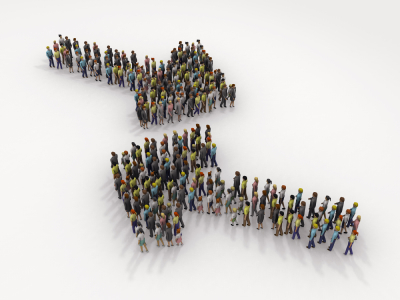
Once you've carefully added all your beautiful artwork to your Gallereo page, it's important to start thinking of how to create exposure for yourself and bring in potential art buyers. We've discussed the power of social media as a means of getting noticed, but the more you reach out to people, the more successful you'll be - so let's take a look at how you can use your personal Gallereo blog in combination with your Facebook fan page to really get noticed.
As you may know, the more text you have associated with your name in search engines, the more easy it will be for people to find you, and making regular blog posts will dramatically increase your profile. If you take the concepts we put forwards in our post on Facebook fan pages and instead apply them directly to your blog, and then share your blog posts on your fan page, you'll be exponentially increasing the number of people who visit your Gallereo page. This can't be stressed enough - this way, when you post about something interesting or clever that you found online, people will be visiting your Gallereo blog page instead of some other external site. Obviously, you'll want to still link to that external site from your blog post, but they'll be visiting your blog first, and if you choose interesting enough content, they'll want to come back.
When you're sharing your blog posts on Facebook, there are a few things to take into consideration that can really improve fan engagement. When you paste a link into Facebook for sharing, it automatically visits the link and chooses a picture, a title and a short description to fill your post - but needless to say, the computer doesn't always choose the best options. Take a look through the various images they offer you, and pick the one that is most exciting and relevant. Take a moment to adjust the title and description as well, as Facebook obviously doesn't have the ability to summarise content or edit for clarity.
Another important thing to do is to actively ask your Facebook fans for feedback in your posts. While it might seem like a simple change, the most effective Facebook posts are those which ask the user to participate in discussions; it makes the user feel like they are personally involved in a dialog the two of you are creating, instead of simply reading a news article. Do your best to respond to any comments or questions your users offer, as the more engaged you are, the more engaged they will be. You wouldn't ignore comments made at a gallery opening, and this is no different! Make note of their questions as potential blog posts, although try not to single anyone out in your posts, and your fans will start to feel as though they're developing a strong relationship with you - and strong relations build strong sales.
Posted on October 11th 2013 on 04:49pm
0 Comments
Thursday 03rd October 2013How to Create a Simple Lightbox to Photograph Your Sculptures
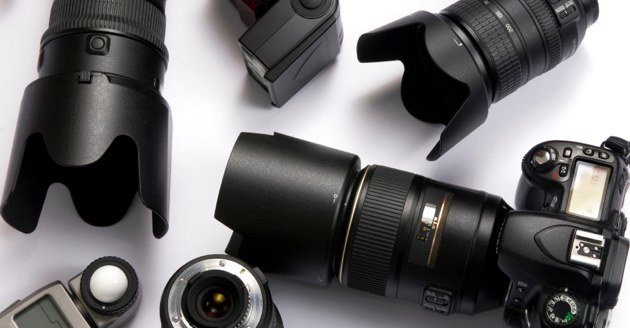 For those of you who work mostly in 2D media, getting your artwork online for your Gallereo page is relatively easy. But for artists who work in sculpture, jewelry or any other three-dimensional media, there are some more unique challenges. Obviously, you'll need a decent camera to create good quality images, but there are a few little tips and tricks that can take your decent sales images to a whole new level. One of the easiest ways to create a real WOW! reaction is to build a simple lightbox.
For those of you who work mostly in 2D media, getting your artwork online for your Gallereo page is relatively easy. But for artists who work in sculpture, jewelry or any other three-dimensional media, there are some more unique challenges. Obviously, you'll need a decent camera to create good quality images, but there are a few little tips and tricks that can take your decent sales images to a whole new level. One of the easiest ways to create a real WOW! reaction is to build a simple lightbox.
What's a lightbox, you ask? Often when you see product or sculptural photography, it's highlighted against a white background for impact - but instead of spending hours of your time in Photoshop removing backgrounds and faking realistic shadows, a lightbox will enable you to create that effect almost instantly. Best of all, you can make one from materials you've probably got lying around at home or the studio.
What you'll need:
-
A cardboard box (choose one large enough to fit your sculpture with as much extra room as possible - if your piece barely fits, you need a bigger box)
-
Tracing paper (wax paper will do in a pinch)
-
Bright white banner paper
-
Tape
-
X-acto knife or similar
-
A powerful light source (the Sun is excellent!)
First, decide the optimal orientation for your lightbox - this will depend on the shape of your pieces. Remove any open flaps from the box, and set it on one end with the open side face towards you. Using your knife, carefully cut 'windows' into the top, left and right sides. Remove as much of these sides as possible, but try to leave about 3-4 cm of 'frame' around the windows, to maintain the shape of the box.
Next, cover the windows you've just created with your tracing/wax paper and attach them with tape to the frames. This will allow a maximum amount of light to hit your subject, while diffusing it gently to create beautiful, soft shadows.
Finally, take your banner paper and attach it to the back of your lightbox, as close to the rear upper seam as possible. Let it hang down loosely in a gentle curve, so that it reaches the bottom of your lightbox and extends out the front. This is your backdrop, and of course you can use any colour of paper you wish, but in most cases white is the best choice.
That's all there is to it! Now take your lightbox, your piece and your camera outside, and find the best possible angle of lighting. If it's not a sunny day, indoor studio lights will work, but non-photographers often don't have access to a light bright enough to really create the stunning exposures that will create the best sales images. Don't forget to take some additional closeups to show the details of your piece. Once you've taken your shots, all that's left is a few simple contrast adjustments in Photoshop and you've got world-class sales photographs for your Gallereo page!
Posted on October 03rd 2013 on 04:18pm
0 Comments
Tuesday 01st October 2013The Importance of Optimism for Freelance Artists
 One of the things that makes artists successful is the emotional range they show in their work. The dynamics between positive and negative aren't just visual tools, they're emotional realities that are present in the greatest masterpieces - but there are times when even the best of us start to feel like we're trapped on the negative side of things. If your sales aren't taking off as much as you'd hoped, or you're feeling a huge creative block, it can be easy to start feeling overwhelmed by reality - which is exactly when you need to focus on remaining optimistic the most.
One of the things that makes artists successful is the emotional range they show in their work. The dynamics between positive and negative aren't just visual tools, they're emotional realities that are present in the greatest masterpieces - but there are times when even the best of us start to feel like we're trapped on the negative side of things. If your sales aren't taking off as much as you'd hoped, or you're feeling a huge creative block, it can be easy to start feeling overwhelmed by reality - which is exactly when you need to focus on remaining optimistic the most.
As a freelance artist, you're the one ultimately in charge of your own success. You don't have to answer to any bureaucratic hierarchy, but you also don't have as much of a safety net. This makes it crucial for you to be the one to constantly drive yourself forwards, and this ultimately becomes the difference between success and failure. If you get too focused on the negative, it can become all to easy to quit and try something else - but if you do, you'll never know the heights of success you can reach if you stay optimistic and keep trying.
There are a few great traits that all optimists share that can be vital to your success. The ability to learn from failure is one of the most useful traits they share, as it helps you counteract the negativity associated with failure by drawing something positive out of the experience. Don't see failures as failures, see them as experiments that taught you something about how you work and what you can do differently in the future. Once you start down the road to optimism, it becomes easier and easier - after all, happiness is the easiest thing in the world to share. A better attitude means clients and patrons will be more drawn to you, which only further reinforces your desire for an even better outlook on life. Best of all, optimism and happiness are often the best ways to spark your creativity and get working on the next great masterpiece.
If you're in a bit of a funk right now, there are several simple techniques you can use to start turning things around. First of all, surround yourself with people who in a better headspace than you are. As we mentioned earlier, happiness spreads easily, and if you spend time around people who are in a good creative place, they're likely to inspire you to do the same. Celebrate the achievement of small goals along your road to optimism, and you'll suddenly find yourself accomplishing larger and larger goals, whether it's finishing off that piece that's been languishing on your easel for weeks, or starting a brand new masterpiece. Finally, remember to keep things in perspective. When you're creatively blocked, things can seem a bit overwhelming, but the world doesn't solely exist in this one day: look forwards to your new creative horizons, and do what you can to move towards them.
Posted on October 01st 2013 on 04:47pm
0 Comments
 As an artist who sells work online, you've got images of all aspects of your work all throughout your Gallero gallery - it's the only way to sell online, after all. But how do you prevent people from taking your images and using them without permission, or simply prnting out a copy of them and framing that instead of buying the original from you? It can be an extremely frustrating problem, and one that doesn't always have an easy solution, since to a certain extent you probably do want people to share your images to help you grow in popularity. There are a few things you can do that will minimise the problem while still giving you that viral popularity boost, so let's take a look at the more popular options.
As an artist who sells work online, you've got images of all aspects of your work all throughout your Gallero gallery - it's the only way to sell online, after all. But how do you prevent people from taking your images and using them without permission, or simply prnting out a copy of them and framing that instead of buying the original from you? It can be an extremely frustrating problem, and one that doesn't always have an easy solution, since to a certain extent you probably do want people to share your images to help you grow in popularity. There are a few things you can do that will minimise the problem while still giving you that viral popularity boost, so let's take a look at the more popular options. Confused? That's OK! Most of these types of articles tend to offer you tips on what to do - but we thought we'd switch things up today and give you some advice on what to avoid on your blog. We don't really want to tell you want to do, as your blog is your own - but if you avoid these pitfalls, your general creativity will fill in the rest!
Confused? That's OK! Most of these types of articles tend to offer you tips on what to do - but we thought we'd switch things up today and give you some advice on what to avoid on your blog. We don't really want to tell you want to do, as your blog is your own - but if you avoid these pitfalls, your general creativity will fill in the rest! As an aspiring artist hoping to start making some sales, one of the most important considerations is also one of the most difficult: how to price your art properly. Properly means a few things, of course, but primarily it's about striking a balance that fairly compensates you for your work while still appealing to both art collectors and public buyers. Don't be seduced by the idea of starting out selling works for five figures, as this can set you up for disappointment, but with skill and perseverance you will be able to work your way up there! We've prepared a few tips to help you decide how to price your work to meet the right balance for your background and skill set.
As an aspiring artist hoping to start making some sales, one of the most important considerations is also one of the most difficult: how to price your art properly. Properly means a few things, of course, but primarily it's about striking a balance that fairly compensates you for your work while still appealing to both art collectors and public buyers. Don't be seduced by the idea of starting out selling works for five figures, as this can set you up for disappointment, but with skill and perseverance you will be able to work your way up there! We've prepared a few tips to help you decide how to price your work to meet the right balance for your background and skill set. As an artist hoping to sell your work online, you probably haven't given much of a thought to your local sales prospects. Showing your work in local galleries can be an incredibly difficult process, and even after a great deal of work it doesn't guarantee any of your pieces will actually sell. But it's undeniable that developing a local fanbase can dramatically improve your chances of successfully climbing your way up in the art world. Fortunately, it's possible to combine your online strategy with an offline one to maximise your sales potential.
As an artist hoping to sell your work online, you probably haven't given much of a thought to your local sales prospects. Showing your work in local galleries can be an incredibly difficult process, and even after a great deal of work it doesn't guarantee any of your pieces will actually sell. But it's undeniable that developing a local fanbase can dramatically improve your chances of successfully climbing your way up in the art world. Fortunately, it's possible to combine your online strategy with an offline one to maximise your sales potential. One of the most intriguing art shows to hit London this year opened recently at south London's Gallery on the Corner, with a very special goal in mind - and showcasing some very special artists. Each of the more than 30 artists being showcased are all of the canine variety, and each has created a special series of minimalist masterpieces for sale, with the proceeds going to the aid of the Battersea Dogs and Cats Home, a nearby rescue shelter.
One of the most intriguing art shows to hit London this year opened recently at south London's Gallery on the Corner, with a very special goal in mind - and showcasing some very special artists. Each of the more than 30 artists being showcased are all of the canine variety, and each has created a special series of minimalist masterpieces for sale, with the proceeds going to the aid of the Battersea Dogs and Cats Home, a nearby rescue shelter. Most of you have probably heard the acronym 'SEO' by now - but for those of you who haven't, it stands for 'search engine optimisation' and it's one of the most important aspects of online art sales. Search engines are responsible for a massive percentage of traffic for almost every website, and your Gallereo page is no exception. Unfortunately, many artists are not exactly sure how to take advantage of SEO techniques when it comes to their art sales, so we'll take you through some basic tips you can apply to boost your web presence. Even though the field of SEO is huge and constantly changing, these tips are fairly universal and not likely to change any time in the future.
Most of you have probably heard the acronym 'SEO' by now - but for those of you who haven't, it stands for 'search engine optimisation' and it's one of the most important aspects of online art sales. Search engines are responsible for a massive percentage of traffic for almost every website, and your Gallereo page is no exception. Unfortunately, many artists are not exactly sure how to take advantage of SEO techniques when it comes to their art sales, so we'll take you through some basic tips you can apply to boost your web presence. Even though the field of SEO is huge and constantly changing, these tips are fairly universal and not likely to change any time in the future. Once you've carefully added all your beautiful artwork to your Gallereo page, it's important to start thinking of how to create exposure for yourself and bring in potential art buyers. We've discussed the power of social media as a means of getting noticed, but the more you reach out to people, the more successful you'll be - so let's take a look at how you can use your personal Gallereo blog in combination with your Facebook fan page to really get noticed.
Once you've carefully added all your beautiful artwork to your Gallereo page, it's important to start thinking of how to create exposure for yourself and bring in potential art buyers. We've discussed the power of social media as a means of getting noticed, but the more you reach out to people, the more successful you'll be - so let's take a look at how you can use your personal Gallereo blog in combination with your Facebook fan page to really get noticed. For those of you who work mostly in 2D media, getting your artwork online for your Gallereo page is relatively easy. But for artists who work in sculpture, jewelry or any other three-dimensional media, there are some more unique challenges. Obviously, you'll need a decent camera to create good quality images, but there are a few little tips and tricks that can take your decent sales images to a whole new level. One of the easiest ways to create a real WOW! reaction is to build a simple lightbox.
For those of you who work mostly in 2D media, getting your artwork online for your Gallereo page is relatively easy. But for artists who work in sculpture, jewelry or any other three-dimensional media, there are some more unique challenges. Obviously, you'll need a decent camera to create good quality images, but there are a few little tips and tricks that can take your decent sales images to a whole new level. One of the easiest ways to create a real WOW! reaction is to build a simple lightbox.  One of the things that makes artists successful is the emotional range they show in their work. The dynamics between positive and negative aren't just visual tools, they're emotional realities that are present in the greatest masterpieces - but there are times when even the best of us start to feel like we're trapped on the negative side of things. If your sales aren't taking off as much as you'd hoped, or you're feeling a huge creative block, it can be easy to start feeling overwhelmed by reality - which is exactly when you need to focus on remaining optimistic the most.
One of the things that makes artists successful is the emotional range they show in their work. The dynamics between positive and negative aren't just visual tools, they're emotional realities that are present in the greatest masterpieces - but there are times when even the best of us start to feel like we're trapped on the negative side of things. If your sales aren't taking off as much as you'd hoped, or you're feeling a huge creative block, it can be easy to start feeling overwhelmed by reality - which is exactly when you need to focus on remaining optimistic the most.



